08 May 2014
Marijuana Withdrawal Eased By Sativex
Like people addicted to a range of other substances, people addicted to cannabis (marijuana, hashish or hashish oil) can develop symptoms of withdrawal when their brains don’t receive the expected amount of the drug. The presence of significant withdrawal symptoms can potentially stop a habitual cannabis user from successfully discontinuing his or her drug intake. In a study published in March 2014 in the American Medical Association journal JAMA Psychiatry, researchers from several Australian institutions investigated the potential effectiveness of a multiple sclerosis medication, called nabiximols (Sativex), as a treatment for people going through cannabis withdrawal. Nabiximols is derived from certain types of cannabis plants.
I Thought Marijuana Wasn’t Addictive?
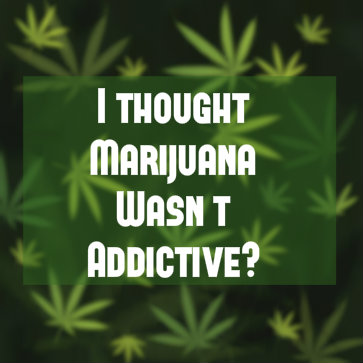 The American Psychiatric Association acknowledges cannabis withdrawal as a distinct and diagnosable mental health condition. People going through this form of drug withdrawal can develop symptoms that include a prominent urge to consume more cannabis, increased levels of anxiety, an unusually agitated or irritated mental state, a reduced ability to fall asleep or stay asleep and a reduced interest in food. As a rule, doctors consider officially diagnosing these symptoms when they substantially impair the day-to-day functionality of affected individuals or produce a notable decline in mental/emotional well-being. As of early 2014, there are no medications available in the U.S. designed to treat people affected by cannabis withdrawal.
The American Psychiatric Association acknowledges cannabis withdrawal as a distinct and diagnosable mental health condition. People going through this form of drug withdrawal can develop symptoms that include a prominent urge to consume more cannabis, increased levels of anxiety, an unusually agitated or irritated mental state, a reduced ability to fall asleep or stay asleep and a reduced interest in food. As a rule, doctors consider officially diagnosing these symptoms when they substantially impair the day-to-day functionality of affected individuals or produce a notable decline in mental/emotional well-being. As of early 2014, there are no medications available in the U.S. designed to treat people affected by cannabis withdrawal.
Nabiximols
Nabiximols is an oral spray chemically extracted from flowers harvested from a cannabis species known as Cannabis sativa. Rather than using plants grown through usual methods (which can have highly varying amounts of THC and other active ingredients), manufacturers of the medication use plants cloned in tightly controlled conditions. Compared to the THC derived from smoking cannabis, the THC contained in nabiximols produces its drug effects more slowly and also reaches a lower overall peak inside the bloodstream. Still, the medication has a fairly rapid impact and typically triggers noticeable effects in 15 to 40 minutes. Together, these properties make nabiximols a potential option for treating people affected by the autoimmune nerve disorder multiple sclerosis. As of 2014, the medication is not available in America; however, Canada and several European countries have approved its use. Currently, pharmaceutical companies are seeking approval for use of the medication in the U.S. as a treatment for certain forms of cancer-related pain.
Potential Effectiveness
In the study published in JAMA Psychiatry, researchers from the University of Sydney, the University of New South Wales and several other Australian institutions used a monthlong project to assess the effectiveness of nabiximols as a treatment for the symptoms of cannabis withdrawal in people affected by cannabis dependence/addiction. Half of the 51 participants in this project received the medication for six days; the other half received a placebo that mimicked the appearance of nabiximols for the same amount of time. Four weeks later, the researchers conducted a follow-up examination of each participant in both the nabiximols group and the placebo group. This examination included a test (called the Cannabis Withdrawal Scale) designed to measure the intensity of withdrawal symptoms, as well as assessments of such things as length of stay in a treatment program, involvement in cannabis use after going through withdrawal and experiences with cannabis-related harm.
After comparing the two groups, the researchers concluded that use of nabiximols does contribute substantially to the general reduction of withdrawal symptoms in physically dependent cannabis users. Specifically, the medication helps lower the intensity of cannabis cravings and ease the impact of the mood alteration commonly associated with cannabis withdrawal. In addition, nabiximols use has a smaller but detectable impact on the severity of several other withdrawal symptoms. Compared to the study participants who did not receive nabiximols, the participants who received the medication also stayed in treatment longer during the project’s initial phase.
The authors of the study published in JAMA Psychiatry note that nabiximols apparently only helps extend participation in cannabis treatment during its active use. Once that use came to an end, the individuals who received the medication did not stay in treatment any longer than the individuals who received a placebo. All told, the study’s authors believe that their findings support the potential usefulness of the medication as a cannabis withdrawal treatment and point toward a need for additional research.
An opioid overdose is a situation that occurs when a person using an opioid drug or medication takes too much of the substance in question and experiences a serious slowdown or complete halt of certain critical body functions. Some people die from such an overdose, while others survive after receiving treatment. In a study scheduled for publication in April 2014 in the journal Mayo Clinic Proceedings, researchers from Harvard-affiliated Massachusetts General Hospital looked at the potential health outcomes for people who experience repeated opioid overdoses. These researchers also examined the factors that make repeated opioid overdoses more likely to occur.
What Are Opioids?
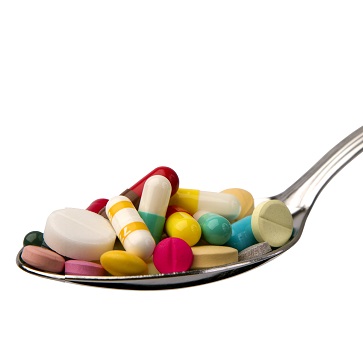 n addition to producing a pleasurable sensation called euphoria and diminishing the ability to feel physical pain, opioid drugs and medications slow down the baseline rate of activity inside both the brain and the spinal cord (known collectively as the central nervous system). If a legitimate opioid user or opioid abuser or addict keeps his or her intake within certain limits, he or she will experience only fairly modest changes in the function of these organs, which together produce and coordinate the nerve impulses required to keep the heart beating and the lungs inhaling and exhaling. However, if he or she takes too much of the opioid in question, central nervous system activity will fall below a critical point and the required nerve impulses will not be maintained. This dangerous and potentially lethal nerve signal disruption marks the onset of an opioid overdose. People who die from such an overdose typically experience an unsustainable decrease in their normal lung function.
n addition to producing a pleasurable sensation called euphoria and diminishing the ability to feel physical pain, opioid drugs and medications slow down the baseline rate of activity inside both the brain and the spinal cord (known collectively as the central nervous system). If a legitimate opioid user or opioid abuser or addict keeps his or her intake within certain limits, he or she will experience only fairly modest changes in the function of these organs, which together produce and coordinate the nerve impulses required to keep the heart beating and the lungs inhaling and exhaling. However, if he or she takes too much of the opioid in question, central nervous system activity will fall below a critical point and the required nerve impulses will not be maintained. This dangerous and potentially lethal nerve signal disruption marks the onset of an opioid overdose. People who die from such an overdose typically experience an unsustainable decrease in their normal lung function.
The United Nations Office on Drugs and Crime lists a number of common contributing factors to an opioid overdose. These factors include widespread access to both legal and illicit/illegal opioid substances, the use of opioids in combination with other mind-altering substances, limited access to treatment options for people addicted to opioid substances and an increased susceptibility to the effects of opioids in people who relapse back into drug/medication abuse after a period of full or partial abstinence. All individuals who abuse opioids run the risk of experiencing a fatal or non-fatal overdose, whether or not they have an addiction to opioid use.
Repeated Overdose Consequences
In the study scheduled for publication in Mayo Clinic Proceedings, the Massachusetts General Hospital researchers used information gathered from close to 20,000 adult opioid users to assess the health consequences of experiencing more than one non-fatal opioid overdose. All of these individuals had survived at least one overdose event involving a legal or illegal opioid; 1,400 of them had survived two to five such events. Although they represented only 7 percent of the study participants, the survivors of multiple events represented roughly 15 percent of the total number of overdoses among the participants. After comparing the single overdose survivors to the multiple overdose survivors, the researchers concluded that the multiple overdose survivors are significantly more likely to require hospitalization to deal with the effects of their condition. Once hospitalized, they are also significantly more likely to require breathing assistance from a ventilator to stay alive.
Repeated Overdose Factors
The researchers concluded that several factors contribute to the likelihood that a person will experience more than one opioid overdose. These factors include having relatively few financial resources, having public health insurance rather than private health insurance, having a diagnosable case of substance addiction, having a diagnosable mental illness, having an illness that affects normal nervous system function and having a chronic lung illness. The single demographic category most likely to experience multiple opioid overdoses is middle-aged white men.
The authors of the study scheduled for publication in Mayo Clinic Proceedings note that first-time cases of opioid overdose also frequently result in hospitalization. People undergoing additional overdoses merely have a higher chance of being hospitalized. First-time victims of opioid overdoses also sometimes require the use of a mechanical ventilator. Again, victims of multiple overdoses merely have greater odds of needing this extreme medical measure. The study’s authors believe that their findings point toward a need to improve local, state and nationwide efforts to lower the opioid overdose rate. They also point toward a need for improved understanding of the factors that contribute to overdose in people using prescribed opioid painkilling medications.
Read About IV Opioid Users Show Interest In Buprenorphine Treatment
The FDA’s approval of a drug it says “will fill an important niche” in the treatment of chronic pain has caused a huge uproar over fears about its potential for abuse.
Zohydro was given the go-ahead in October 2013 for the treatment of moderate-to-severe chronic pain. Developed by the pharmaceutical company Zogenix, Zohydro is composed of an unmixed, undiluted 50-milligram shot of the opioid analgesic hydrocodone, which is the primary ingredient in the well-known and widely prescribed pain-relieving drug Vicodin. Zohydro is approximately five times more potent than Vicodin, however, and according to FDA Commissioner Dr. Margaret Hamburg, it will fill “an important and unique niche” in the crowded prescription painkiller marketplace. Zohydro was released in March, and all patients who receive a chronic pain diagnosis will now be eligible to obtain a prescription for this powerful narcotic.
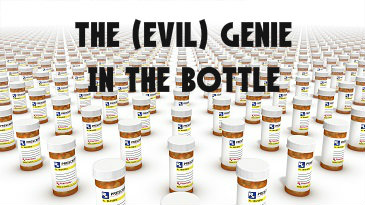 But the FDA’s decision to approve the release of Zohydro was highly surprising, since its own advisory panel had voted 11-2 against approval. The medical authorities appointed to this panel cited the highly addictive nature of opioid medications as the rationale for their thumbs-down verdict. In the months that have passed since the Zohydro ruling, the criticism directed at the FDA has only intensified, and the agency has been forced to repeatedly defend a decision that many see as indefensible.
But the FDA’s decision to approve the release of Zohydro was highly surprising, since its own advisory panel had voted 11-2 against approval. The medical authorities appointed to this panel cited the highly addictive nature of opioid medications as the rationale for their thumbs-down verdict. In the months that have passed since the Zohydro ruling, the criticism directed at the FDA has only intensified, and the agency has been forced to repeatedly defend a decision that many see as indefensible.
Addiction to pharmaceutical-grade painkillers has reached epidemic proportions, and the U.S. Centers for Disease Control has confirmed that opioids like OxyContin and Vicodin are the primary villains in this unfolding tragedy. Many medical professionals apparently came to view these drugs as panaceas and began prescribing them for all degrees of pain and a vast assortment of conditions, and, as a result, opioid addiction rates exploded. Since Zohydro is just a turbo-charged version of Vicodin, it is likely to be far more addictive than its milder cousin, and many medical experts believe it is the height of folly, if not downright hypocritical, for the government to be putting such a potentially dangerous substance into circulation at a time when the fight against prescription drug abuse has just begun to pick up steam.
In September 2013, the FDA announced it was actually tightening label restrictions on opioid painkillers, recommending that physicians use them only with patients who needed round-the-clock treatment for chronic pain and when there were no other viable treatment options available. This action was unequivocally justified as a strategy to combat addiction, so observers were taken aback when only one month later the FDA chose to approve a drug that threatens to accelerate the opioid addiction problem.
Critics of the FDA’s decision launched a campaign to convince the organization to change its minds, and representatives of more than 40 influential healthcare/addiction treatment organizations signed and submitted a letter to the agency that outlined the dangers of adding Zohydro to the menu of available opioid painkillers. But this ardent plea from the experts was to no avail, and the FDA steadfastly refused to reverse its puzzling course.
The (Evil) Genie in the Pill Bottle
The FDA is often accused of having an overly cozy relationship with big pharma and big agriculture, the industries it has been tasked with regulating, and this decision to legalize a new narcotic painkiller despite the negative judgment of its handpicked medical advisors would seem to represent a triumph of favoritism over sensible public policy. In response to what many see as an outrage, separate bills have now been introduced in the House and Senate that if passed would compel the FDA to remove Zohydro from the marketplace.
Compounding the situation, later in the year the drug giant Purdue Pharma will release another single-ingredient/high-dose hydrocodone painkilling drug, in a tamper-resistant form that may render Zohydro obsolete. This company already sells a tamper-resistant version of OxyContin, which allegedly cannot be crushed or dissolved for chewing or snorting and therefore is not supposed to be as addictive (chewing or snorting opioids delivers a more concentrated dosage to the bloodstream). A less malleable form of mega-jolt hydrocodone would presumably offer the same advantages, and the folks manufacturing Zohydro would likely have to switch to a tamper-resistant form themselves if they expected their drug to survive.
But addiction treatment specialists dispute the notion that making addictive drugs harder to alter makes them less dangerous. They note that virtually every person who has become dependent on opioid painkillers started out swallowing pills and only later resorted to chewing or snorting when their substance abuse problems raged out of control. Nevertheless, many fear the positive PR that tamper-resistant technology has received may help to defuse some of the opposition that this new class of drugs has generated, assuming they do eventually show up on the marketplace in this more “respectable” form.
Read How Big Pharma Is Testing Super Painkillers
05 May 2014
Prevent Prescription Drug Abuse In Your Teen
Prescription drug abuse is a major problem across the U.S. and for people of all age groups. Teens, however, are particularly vulnerable and if you have children you should be aware of the risks and dangers. There are two main kinds of drugs being abused by young people: narcotic painkillers and stimulants. The former are used to get a high, but the latter are often abused as a study aid. Stimulants, like those used to treat ADHD, produce wakefulness and many teens use them to stay up at night for studying.
The statistics regarding teen abuse of prescription drugs are alarming. Since 2008, abuse has risen by 33 percent. The statistics also show that most young people do not believe there are any risks in abusing prescriptions and that parents are largely ignorant when it comes to their children’s abuse of these drugs as well as the risks. Learn how to keep your teen safe.
Where Do Teens Get Prescription Drugs?
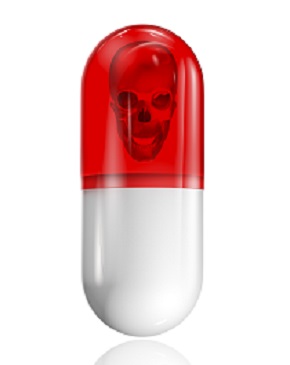 The first line of defense against abuse of prescriptions by your teen is to limit her access to them. So where are teens getting these medications? The most common location for teens to find prescriptions is the medicine cabinet. Teens get drugs right from their own homes. If they can’t find them there, they turn to their friends’ medicine cabinets. Many people are prescribed narcotics and stimulants, so finding them in homes is not difficult.
The first line of defense against abuse of prescriptions by your teen is to limit her access to them. So where are teens getting these medications? The most common location for teens to find prescriptions is the medicine cabinet. Teens get drugs right from their own homes. If they can’t find them there, they turn to their friends’ medicine cabinets. Many people are prescribed narcotics and stimulants, so finding them in homes is not difficult.
If the drugs cannot be pilfered, your teen can most likely buy them. Buying and selling prescriptions in high schools are common. Your teen may also be able to purchase medications online. Illegal pharmacies will not hesitate to sell to a teen.
How Can I Limit My Teen’s Access To Prescriptions?
With prescription medications so prevalent in homes, at schools and online, you need to be especially vigilant to restrict your teen’s access. If you have prescriptions in your home, keep them in a locked cabinet. If your teen has been prescribed one of these commonly abused medications, keep it locked up and dose it out to her as directed by her doctor. A common source for stolen medications is expired pills that have been forgotten or thrown in the trash. Be aware of your unused drugs, keep track of them and dispose of them properly.
Unfortunately, limiting your teen’s access to drugs at home is where your control ends. You cannot control her access at school or at friends’ houses. What you can do, though, is educate your teen about the risks and dangers of drug abuse. First read up for your own knowledge and then talk to your children about how harmful prescriptions can be. Although they are legal and prescribed by doctors, these factors do not mean they are safe for everyone.
It is also important to educate your family and friends about prescriptions and keeping them under control. Your teen may be able to find drugs at a grandparent’s house or any other family member’s, but if everyone kept tighter control of their medications, fewer drugs would end up on the black market.
Finally, it’s important that you maintain a close and open relationship with your teen. The more time you spend interacting and talking, the more able you will be to detect when something is wrong or if she is showing signs of abusing drugs. This healthy relationship will also mean that your teen will be more likely to come to you with questions, concerns, and problems related to drugs and drug abuse.
02 May 2014
Heroin Use In Kentucky Growing At Alarming Rates
Obtaining prescription drugs for non-medical purposes is often as simple as pilfering a medicine cabinet, but with national efforts aimed at curbing the misuse and abuse of prescription drugs there may be a changing trend in the popularity of prescription drugs versus street drugs. A report highlights the emerging increase in heroin use in Kentucky, and national trends mirror that data.
The report from the Kentucky Injury Prevention and Research Center (KIPRC) analyzes overdoses in Kentucky as well as associated mortality and financial consequences on the population. KIPRC is part of the University of Kentucky’s College of Public Health and is in partnership with the Kentucky Department for Public Health.36
The findings show that the number of total overdoses resulting in death or emergency room visits remained stable from 2011 to 2012. In addition, the number of overdoses due to benzodiazepines and prescription opioids decreased in that same period.
Why Are There So Many People Overdosing?
 The primary reason for overdose deaths in Kentucky was pharmaceutical opioids, and benzodiazepines were the primary drugs related to overdose ER visits, but they decreased nine percent, from a total of 939 visits in 2011 to 856 in 2012. The primary reason that admission was made for a stay in the hospital related to overdose was self-harm. The highest rates of overdose between 2008 and 2012 were found in Casey, Johnson, Carroll, Powell, and Nicholas Counties.
The primary reason for overdose deaths in Kentucky was pharmaceutical opioids, and benzodiazepines were the primary drugs related to overdose ER visits, but they decreased nine percent, from a total of 939 visits in 2011 to 856 in 2012. The primary reason that admission was made for a stay in the hospital related to overdose was self-harm. The highest rates of overdose between 2008 and 2012 were found in Casey, Johnson, Carroll, Powell, and Nicholas Counties.
The decrease in benzodiazepines and opioids may be explained by an increase in heroin use. There was a significant increase in inpatient hospitalization deaths and ER visits due to heroin use – 129 fatal overdoses in 2012, a 207 percent increase over the 42 deaths in 2011. There was also a 174 increase in hospitalizations and a 197 percent increase in ER visits related to heroin overdose.
The Substance Abuse and Mental Health Services Administration (SAMHSA) has also documented the increase in heroin use on a national scale. SAMHSA reports that heroin use grew by 80 percent from 2007 to 2012.
Likewise, the Centers for Disease Control and Prevention shows a 55 percent increase in overdose deaths related to heroin use for the period from 2000 to 2010. Many experts believe that the increase of heroin use and the decrease of prescription drug abuse are related.
The KIPRC report also provides an analysis of the costs that Kentucky incurs due to drug overdose. The total financial toll for the state rose by seven percent to $129.3 million in 2012, with $41.3 million billed to Medicare and $34.1 million to Medicaid.
Terry Bunn, PhD, director of KIPRC, says that the problem requires a comprehensive approach to finding strategies to alleviate the levels of drug abuse and the cost of treatment in Kentucky. The state needs to identify risk factors that lead to drug overdoses and develop interventions that prevent the likelihood of a drug overdose, she says. In addition, the report’s findings support the need for increased availability of naloxone, an opiate antidote that can be used by first responders as a lifesaving measure to prevent fatal overdose.
01 May 2014
Is Repairing Your Marriage After Rehab Possible?
Few things take a greater toll on relationships than addiction. If you are an addict in recovery and you are married, you may be wondering what will happen next. Is your spouse going to leave you? Will she ever trust you again? How will you ever make it up to her? Divorce in the aftermath of addiction is not uncommon, but it is possible to repair your marriage. You can make it up to your wife if you are both willing to do the work. The fact that you sought recovery is a sign that you can work toward repairing all aspects of your life damaged by addiction.
Is Divorce Inevitable After Addiction?
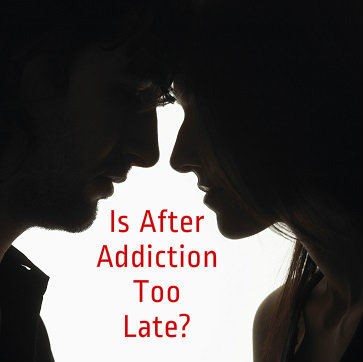 Divorce may be common when one partner is addicted, but it does not need to be inevitable. Addiction is one of the biggest challenges your relationship will ever face, but you can bring it back from the brink. To do so, you both need to be on the same page. Have an honest and open discussion with your wife and find out if she is committed to working with you to repair your relationship. She may have doubts, but hopefully the fact that you were willing to ask for professional help will convince her that you are serious about making amends.
Divorce may be common when one partner is addicted, but it does not need to be inevitable. Addiction is one of the biggest challenges your relationship will ever face, but you can bring it back from the brink. To do so, you both need to be on the same page. Have an honest and open discussion with your wife and find out if she is committed to working with you to repair your relationship. She may have doubts, but hopefully the fact that you were willing to ask for professional help will convince her that you are serious about making amends.
How Do You Make Amends To Your Spouse?
Making amends is an important part of the recovery process and no one deserves it more than your partner. Addiction leads people to do hurtful things to the ones they love the most. You may have lied to her, cheated on her or neglected her. You have a lot of making up to do, and although it may seem daunting, it is possible.
Making up for all the hurt and damage does not mean that you have to spend the rest of your life groveling and giving in to your spouse. If that is what she is expecting, you are both headed down the wrong path. Making amends means apologizing and restoring her faith in you. To do so you need to treat her well, make heartfelt apologies and, most importantly, strive to avoid relapsing and sinking back into the hole of addiction.
Can Your Spouse Ever Trust You Again?
One of the biggest impediments to bringing back a healthy relationship is trust. What you damaged the most in your marriage was your wife’s trust. You probably promised over and over again to stop using, to stop lying, to stop cheating, and to be better. These were all promises you were incapable of keeping at the time, but they did damage to trust nonetheless.
The only way to develop trust is to earn it. Unfortunately, earning trust takes much more time than losing it. It takes many repeated instances of being reliable and dependable to earn trust. Make sure your wife understands that her trust will be slow to regain. Keep being the person she needs you to be, and with time, she will trust you again.
Repairing a marriage after the devastation caused by addiction is a difficult challenge, but not an impossible one. Be sure to communicate with each other about what you are feeling; rekindle your love for each other by spending quality time together and consider seeking the help of a professional marriage counselor. Perhaps most importantly, continue to work on your own recovery. The best way to show your spouse that you are committed to rebuilding your relationship is to stay sober and avoid relapse.
Find Out What Are The Ways To Recognize Addiction Denial In A Loved One?


